Kaniyang Country
The 56,000 hectare Tone-Perup Reserve (Perup,) lies in the upper catchment of the Warren River, a distance of 300kms South of Perth, between Bridgetown, Manjimup, Lake Muir and Boyup Brook. It is contained within 285,000 hectares of state forest, mostly Jarrah/Marri but also with areas of Wandoo and Melaleuca.
The Entry Sign at Perup.
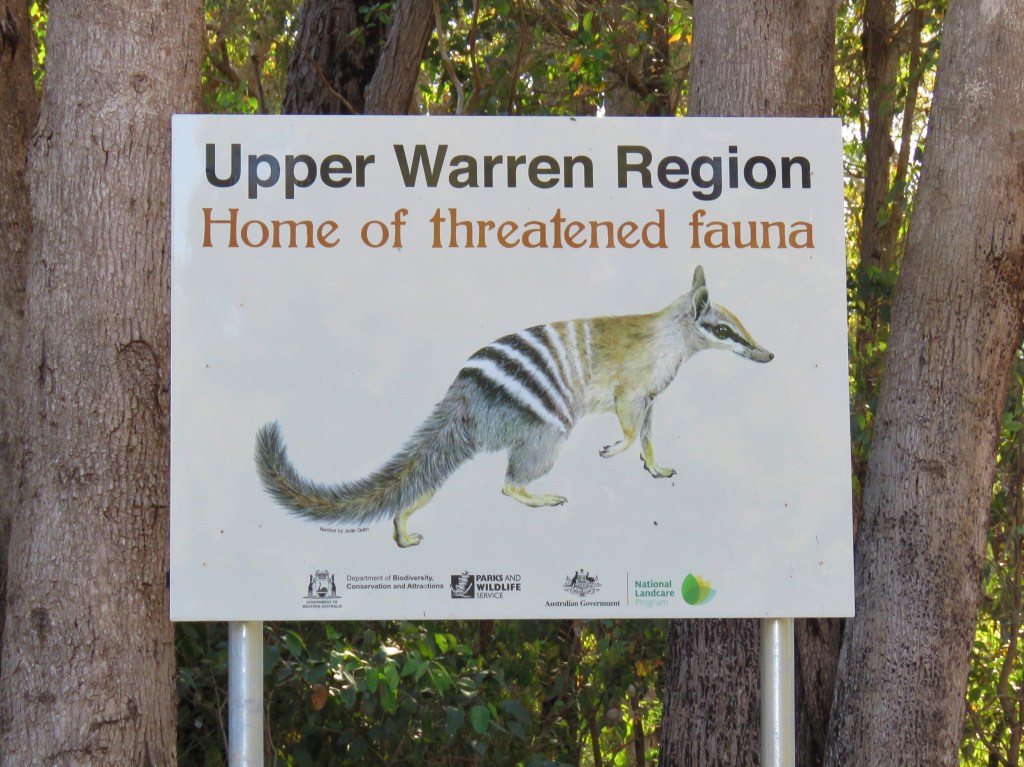
Perup contains many threatened mammal species that have all but disappeared elsewhere, mammals such as Tammar Wallaby, Numbat, Western Ringtail Possum, Quenda, Woylie and Chuditch. Other mammals found in these areas include the Western Brush Wallaby, Brush-tailed Phascogale, Western Grey Kangaroo and Brush-tailed Possum.
I had first visited Perup in 2011 and was blown away by the abundant wildlife of the reserve. It was here that I had my first two Numbat sightings. It was also at Perup that I first saw Chuditch, Brush-tailed Phascogale, Woylie and Tammar Wallaby, and as such Perup holds a very special place in my heart.
Map showing location of Perup Nature Reserve.
I had recently dedicated a year to visiting the Wheatbelt Reserves, and it occurred to me that it would be great to revisit Perup and discover if the wildlife there was really as prolific as I had remembered.
Visit 1 – December 22nd – 25th, 2018. Chuditch!
Saturday 22nd December I left Perth early to arrive early in the Southern Forests because the day was predicted to reach 36C. One of my target species was of course the Numbat, and during high temperatures Numbats take a siesta during the hottest part of the day, so early morning and late afternoon are best for this species during these warmer months.
I entered the forest via Gomes Road and Kingston Drive around 9am with the day already warm, and I was really happy to be back at one of my favourite mammal watching spots in the whole of Australia.
The first wildlife I encountered was surely one of our most endearing reptiles sunning itself on Kingston Drive. It was a Bobtail that was still a little sluggish probably having just started basking.
Western Bobtail.
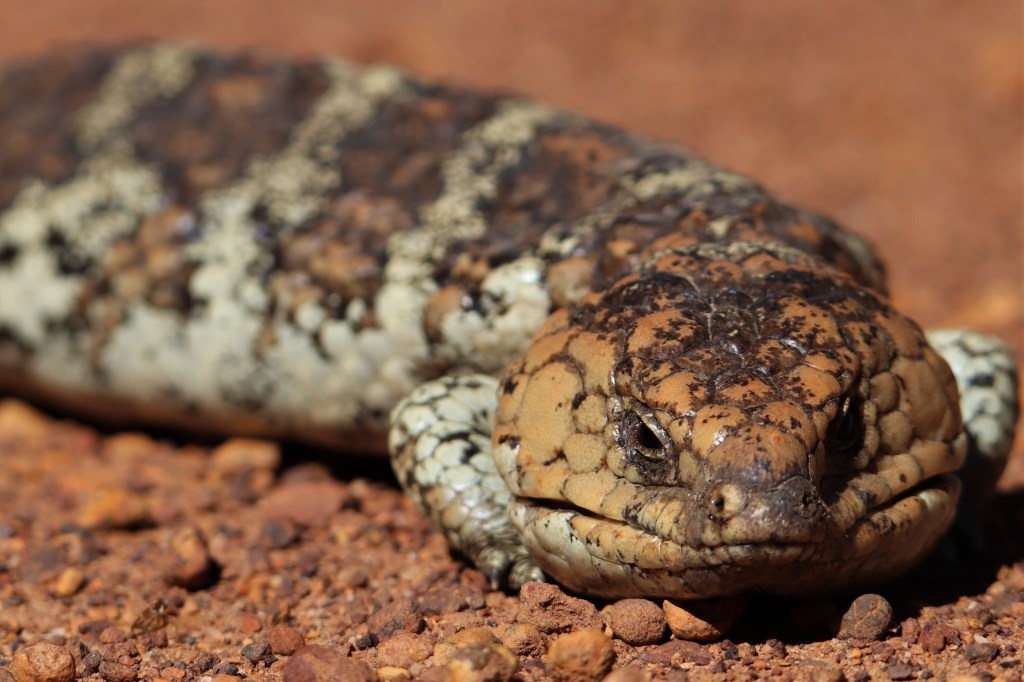
Corbalup Road was where I had previously had both of my previous sightings of Numbat at Perup so it was this road that I drove along next. Unfortunately the first wildlife I encountered was a Southern Heath Monitor dead on road (D.O.R.) These dark monitor lizards can look very much like a fallen branch on the road, especially in forests where trees cast shadows across the roads in the mornings and afternoons.
Further down Corbalup Road, I came across a second Southern Heath Monitor, but this one was very much alive. I managed a few photos before it ambled off into the bush.
Late morning and the day was very much hot so I made my way to the Perup Nature’s Guesthouse in the middle of Tone-Perup Reserve my accommodation for the next three nights. I didn’t have to look far for wildlife at the cottage (Kulbardi) because on a ledge above the porch were two sleeping Brush-tailed Possums, their usual home in the roof cavity was too warm for slumber on this hot day so they had sensibly moved outside to cooler climes.
Accommodation at Perup :- https://www.perupnaturesguesthouse.com.au/
Sleeping Brush-tailed Possums – Kulbardi Cottage.

After setting up at the cottage, I set off late afternoon for another drive, This time I drove Distributor Road where I saw a further four Southern Heath Monitors, two alive and two D.O.R.
I had checked out maps before the trip and wanted to recce Simcock Road, South of Boyup Brook – Cranbrook Road where it passes over a tributary of the Perup River. I thought this area maybe swampy and contain melaleuca species, and therefore be good for Western Ringtail Possum. The tributary was completely dry, but the Melaleuca Thicket looked promising so I decided to return after dark.
Back at the cottage after darkness had fallen, I had a quick spotlight around the grounds of the Ecology Lodge. Wildlife was plentiful as usual with all of Brushtail Possums, Tammar Wallabies and Woylies easily found. I came across a rather confiding Quenda foraging on the Bandicoot Scoot Trail, but unfortunately there were no Brush-tailed Phascogales in the flowering gums near the Per Christiansen Classroom.
Beautiful White Tailed Brush-tailed Possum.
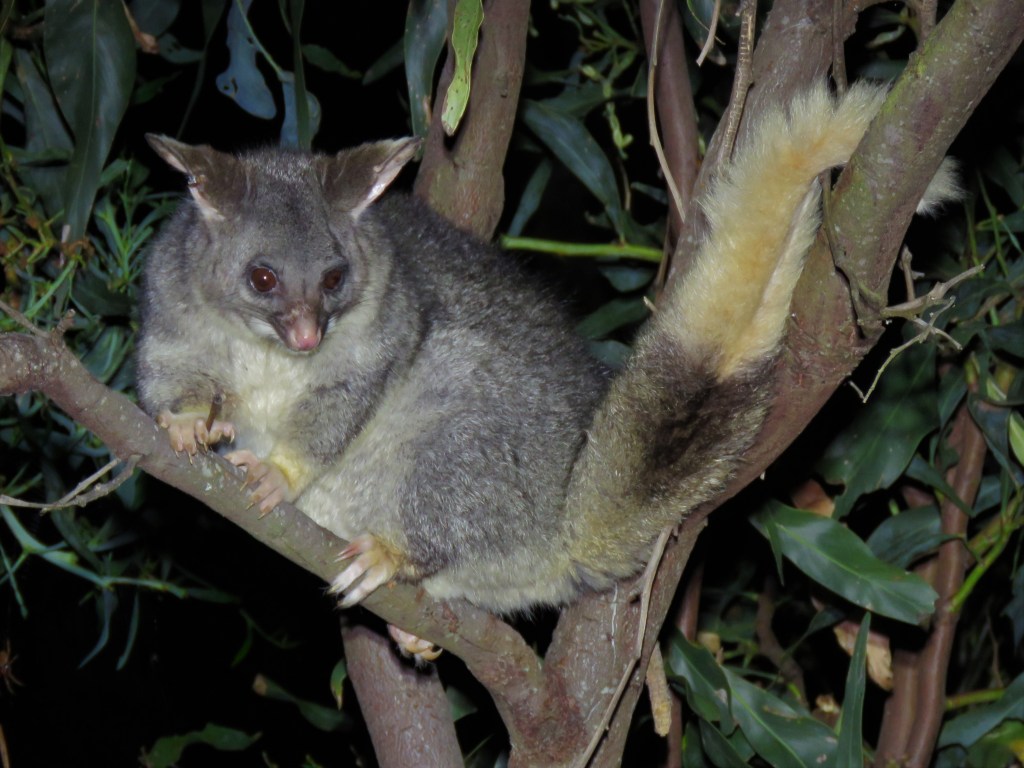
I made my way to the swampy area on Simcock Road and no sooner had I parked the car than a Tawny Frogmouth flew out of a tree into my car beams to hawk an insect. I explored the area on foot and heard the thump of alarm of Tammar Wallaby feet as they fled into the melaleuca.
Tawny Frogmouth.
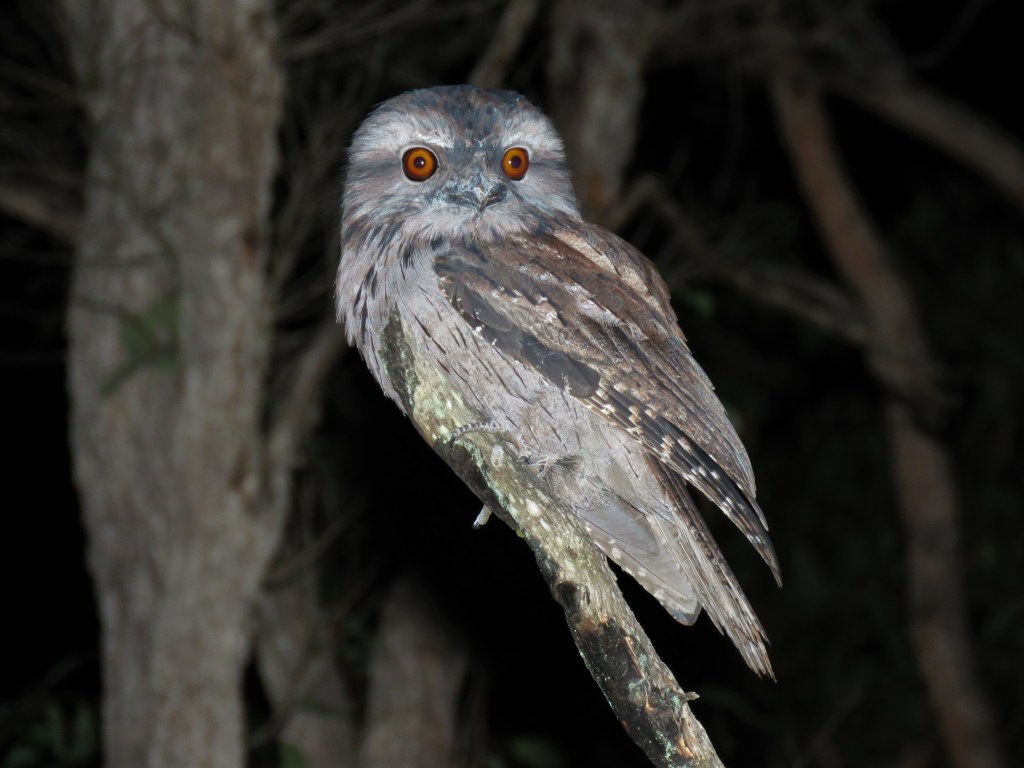
I followed into the melaleuca and walked through the middle of the thicket on the bed of a dry watercourse. Here I encountered a mammal in the distance on its hind feet sniffing the air, at first I was unsure of what it was but once it returned to four feet I could see it was a Quenda. This animal proved quite confiding and resulted in a close encounter.
Quenda in Unusual Posture.

Quenda (Southern Brown Bandicoot.)

I didn’t find any Western Ringtail Possums but there were plenty of Brushtails feeding in the melaleuca. As I walked back to the car I disturbed many more Tammar Wallabies and the area was extremely good for this species.
I spotlighted from the car window back along Boyup Brook – Cranbrook Rd on my way back to the cottage and saw lots of Brush-tailed Possums and Western Grey Kangaroos, but the find of the night was a Chuditch that I think had been feeding on a road-killed Southern Heath Monitor, that bolted up into a tree next to the road.
Chuditch with Typical Blue Eyeshine of this Species.

While I was photographing the Chuditch, I cast my beam down into the Paperbark Swamp alongside the road and found two Tammar Wallabies.
The following morning I walked the Woylie Walk before breakfast and observed a flock of Carnaby’s Cockatoos feeding on Hakea. I also disturbed both Western Grey Kangaroos and a Napolean Skink during the walk.
Later in the morning I drove the roads North of the Boyup Brook – Cranbrook Road. Distributor Rd, Spencer Rd and Westbourne Rd, parts of which passed through excellent Numbat habitat. This was because this end of the reserve contained more Powderbark Trees which with their habit of dropping limbs provides plenty of hollow logs for Numbats.
I didn’t encounter any Numbats however, but I did find another three Southern Heath Monitors basking on the roads. I observed that the reptiles are seen basking on the roads after 9.30am at Perup at this time of year which must be when the ambient temperature is warm enough for them to become active on sunny days.
Southern Heath Monitors are much darker than their Monitor Lizard cousins further North. This an adaptation to the cooler climes in which they live, dark colours absorbing heat better than the lighter yellows of the monitor lizards further North.
Southern Heath Monitor.
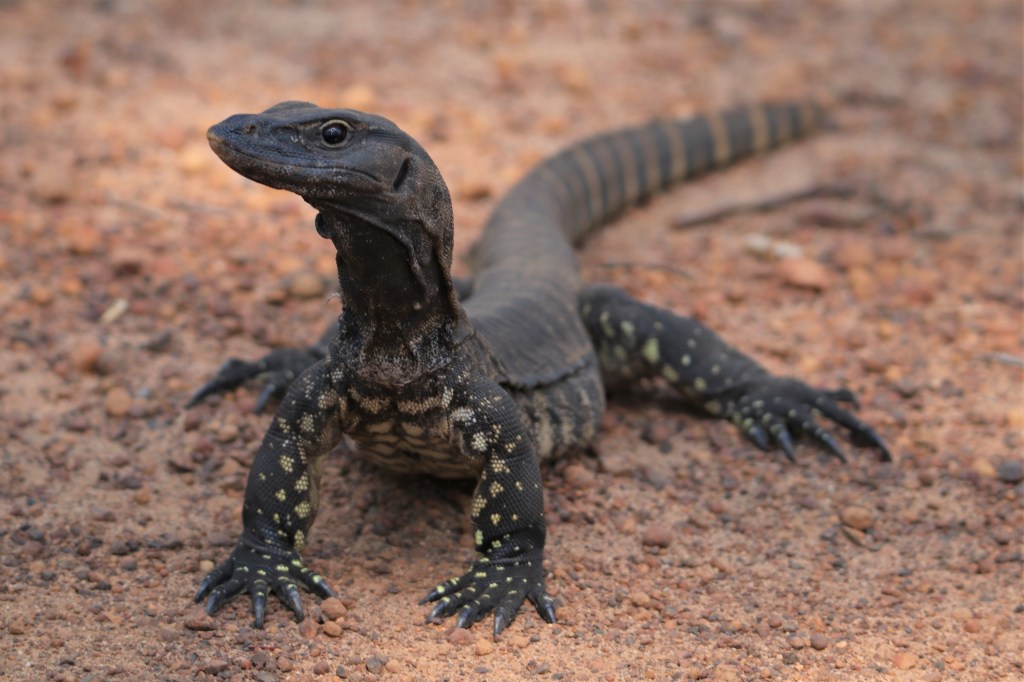
That afternoon I drove to the excellent Chindilup Pool South of the Muirs Highway for a swim, then late afternoon, I drove the tracks around Lake Muir looking unsuccessfully for Western Brush Wallabies.
After dark on the second night I spent more time observing the abundant wildlife around Perup Ecology Lodge. Brushtail Possums were the species most commonly seen, but Woylies and Tammar Wallabies were also in good numbers.
Woylie (Brushtail Bettong.)
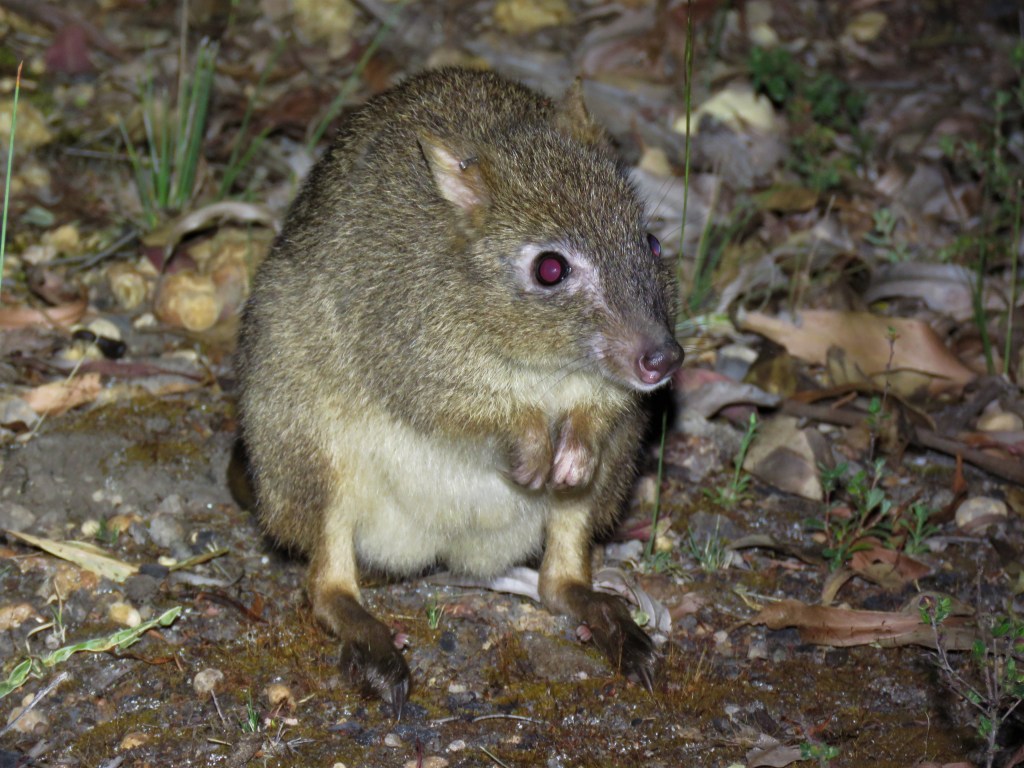
Tammar Wallaby.

Brushtail Possum.
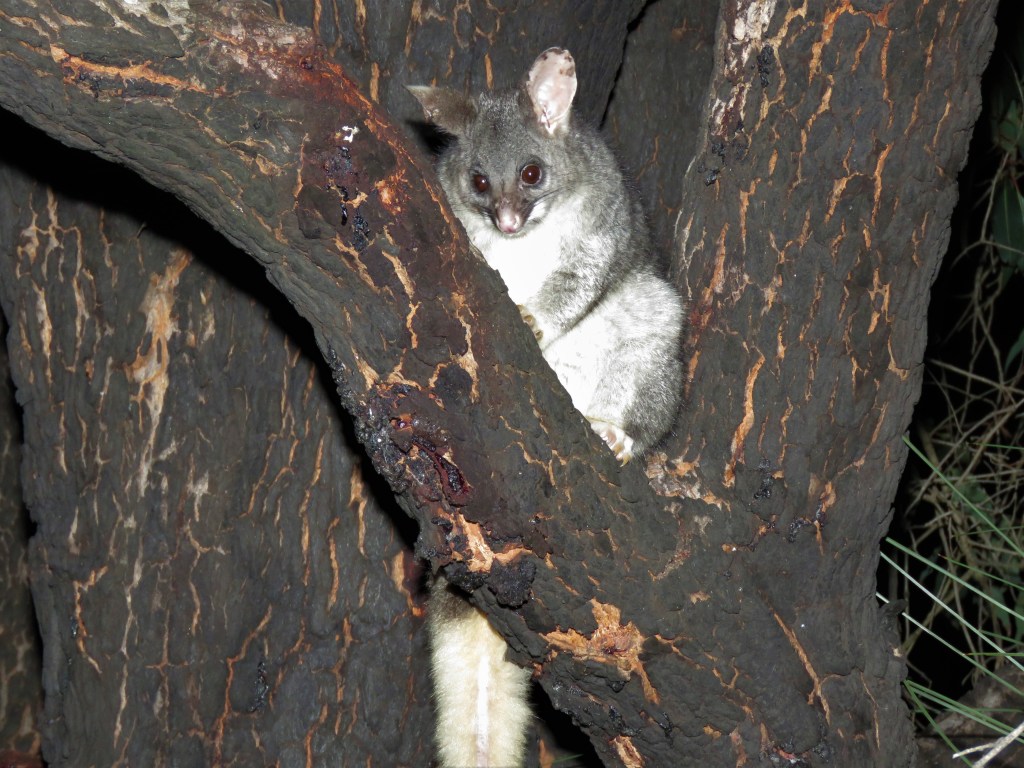
Later on in the evening I set off to explore the forest outside of the Guesthouse. First stop was the Perup River which passes under Boyup Brook – Cranbrook Road. It was reduced to a series of pools at this time of year but as soon as I parked the car I could hear a cacophony of Motorbike Frogs, December being the peak of their calling season.
The call of the Motorbike Frog cannot possibly be confused with any other frog and yes it really does sound like a motorbike changing gear. This species of Frog can be found quite far from water far from and I didn’t have to look hard to find them.
Motorbike Frog.
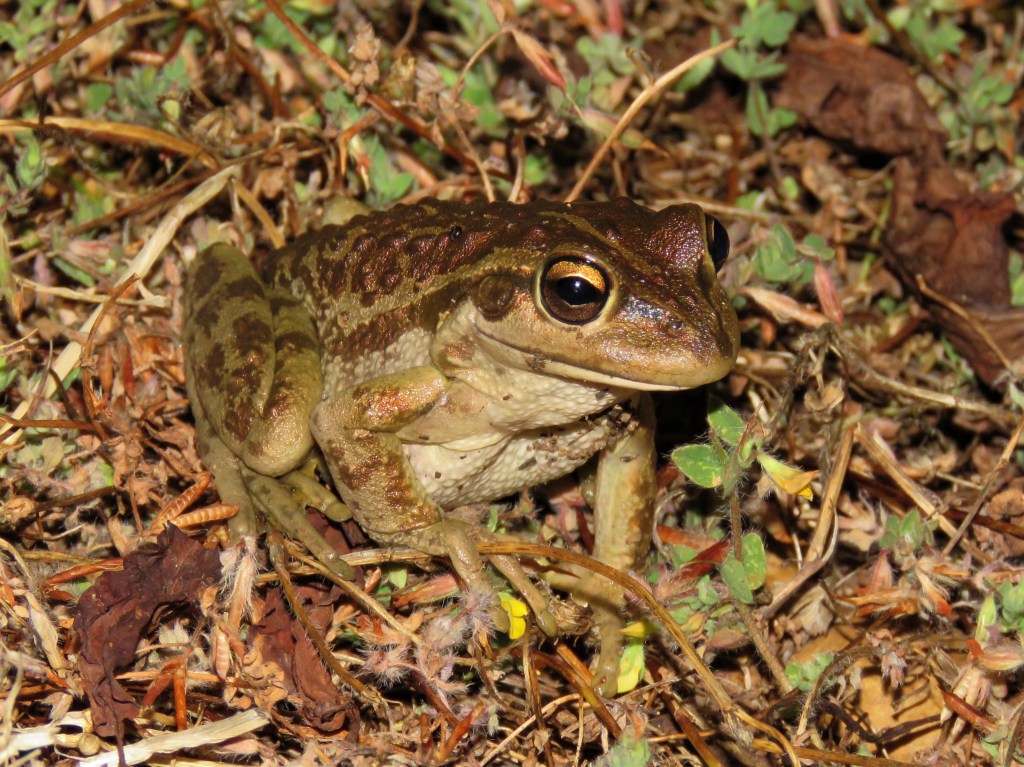
Next stop was the melaleuca thicket on Simcock Road that I had visited the previous night, that I wanted to explore further. During the course of an hour I picked up a two Tawny Frogmouths, a number of Brushtail Possums and realised that the greatest number of Tammar Wallabies were not actually in the thicket but feeding in the adjacent farmers fields. Tonight was the full moon and it was almost possible to navigate without a spotlight the light was so bright.
Brushtail Possum under a Full Moon.

My last stop for the night was to explore Simcock Road, North of the Boyup Brook – Cranbrook Road because I had a read in the visitor book at Kulbardi Cottage of a Ringtail Possum being spotted at this location. Indeed it didn’t take long before I found this species in a tall Jarrah Tree.
Ringtail Possum.

My final full day for this visit to Perup I covered many covered many kilometres driving the roads and tracks looking for the elusive Numbat. Although I didn’t find this species I did disturb a couple of Western Brush Wallabies on the corner of Kingston Drive and Corbalup Road. The habitat with a thick understory of Zamia ferns being excellent for this species.
I also found a further two Southern Heath Monitors during the day. The first on Lea Road, the second on Corbalup Rd. The Corbalup Road animal took fright and scarpered off into the forest when I was photographing it. I followed and found it half way up a Jarrah Tree. I had always assumed smaller Monitor Lizards took to trees for safety but this was the first time I had seen evidence of it within Australia.
Southern Heath Monitor in Jarrah Tree.
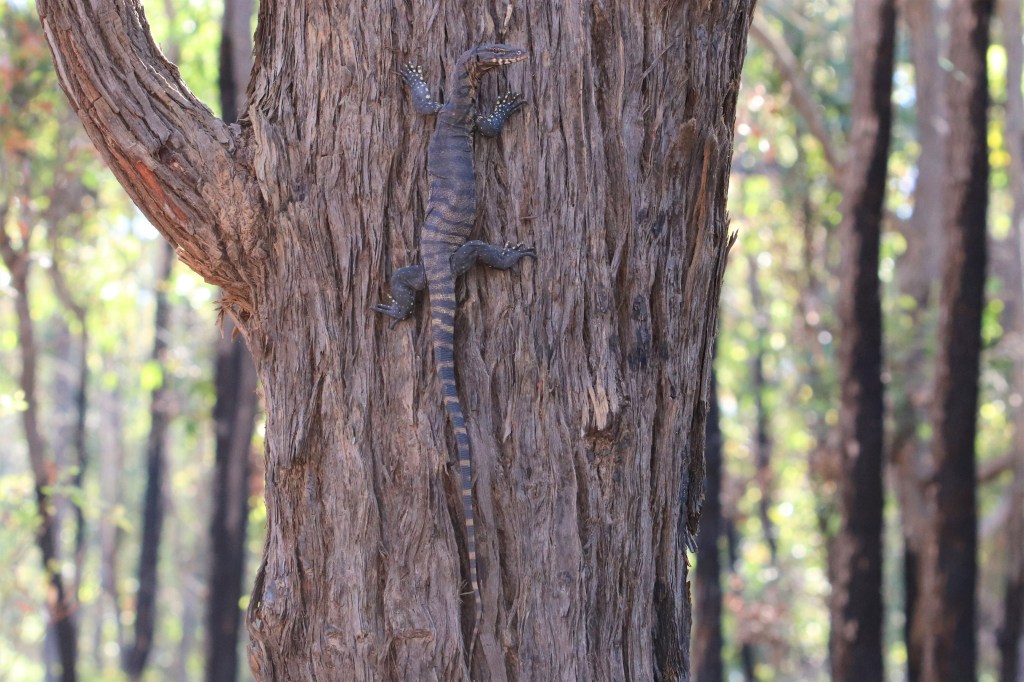
Spotlighting around the Perup Nature’s Guesthouse later that evening I saw the usual Brushtails, Tammars and Woylies but in addition I found a couple of Ringtail Possums in a Swamp Paperbark. The moon rose around 9pm on this night casting a yellow glow in the East of the sky before breaching the horizon.
Full Moon Rising over Tone-Perup Reserve.

Spotlighting around the forest later on that evening I found only a Brushtail Possum on Northern Road. Boyup Brook – Cranbrook Road proved to be good for Chuditch that night with the one animal pulling a road killed snake off the road. My second and third Chuditch sightings of the night were almost certainly the same animal found in exactly the same location but at different times during the evening.
I disturbed a probable Western Brush Wallaby at Heartlea, there were also Brushtails at this location. Unfortunately, I saw a Cat crossing from farmland into the woodland and the night was rounded off back at the Perup Nature’s Guesthouse with a stubborn Woylie that refused to budge off the road!
I woke up on Christmas day and packed the car. I was hoping that Santa would bring me a Numbat so I headed to Numbat Road off Westbourne Road. The Numbat didn’t materialise but the Powderbark habitat there is excellent. I did disturb a Tammar into a nearby Melaleuca Thicket and also a Southern Heath Monitor off a track.
Now, it was time to head off to re-join civilisation but already I was looking forward to my next visit to Perup, planned for the March long weekend.
Visit 2 – March 1st – 4th, 2019. Numbat!
Public Holiday Weekend was chaos on the Kwinana Freeway South of Perth as expected as I left the city Friday afternoon. Fortunately most of the crowds head to the Capes Region unaware of the treasures waiting to be discovered further inland in the Southern Forests. This trip I chose a different route to Perup and instead drove the Donnybrook – Boyup Brook Road which passes through state forest part of the way, and here I saw my first wildlife of the weekend with a Brushtail Possum and two Foxes crossing the road within the state forest.
Foxes are prolific across the Southern Australian Mainland and at the annual Boyup Brook Fox Shoot, 705 foxes were shot in a single night, frightening numbers indeed and one of the reasons large numbers of Australian native wildlife are struggling to survive.
South of the town of Boyup Brook near the small settlement of Mayanup I encountered further wildlife with two Western Grey Kangaroos grazing dangerously close to the side of the road!
Once I reached Perup I parked the car at the Heartlea Picnic Area and a quick spotlight around revealed a Brushtail Possum, I also explored the woodland at the Southern end of Distributor Road and found another Brushtail and a Woylie.
I then proceeded down Boyup Brook – Cranbrook Road spotlighting from the car window. I saw a Western Grey Kangaroo and there were of course plenty of Brushtail Possums including many of the black variety that can initially look like Western Ringtail Possums from a distance until the bushy tail and larger ears gives them away.
Brushtail Possum (Black Variety.)

The sound of shotguns echoed across the woodland from the nearby farmers fields. I hoped it was feral pests being targeted but Western Greys are of course often the victim of the farmers gun.
Spooked by the sound of gunshot I made my way down to the melaleuca thicket on Simcock Road and immediately found a second Woylie of the night. The Tammar Wallabies that I always see at this location were around in their usual large numbers grazing in the fields, but once alarmed by the flashlight they make a quick dash for the safely of the Melaleuca Thicket.
It was already the early hours of Saturday morning so I made my way to the location I had choosen to set up camp for the night, aware that a big day of wildlife watching awaiting me in the morning.
Saturday morning I awoke to an overcast sky and a cold morning. Numbats, my target for the day, are typically inactive on cold mornings so I was able to have a leisurely breakfast while I packed up camp.
The Northeast of the reserve was my target for the morning specifically Numbat Rd which I had discovered on the previous visit has excellent Numbat habitat in the form of Powderbark (E. accedens.) Woodland. This habitat type is common in the patches of remaining bush in the dryer wheatbelt further inland.
Powderbark Woodland with Fallen Logs Providing Shelter for Numbats.

The sky was beginning to clear and the day warm as I drove the tracks. Branches and sticks littered the floor of the woodland, but one branch laying across the track looked a little different from the rest. I stopped the car, while I squinted trying to make out the form on the ground, eventually deciding from the way it bent at the end that it couldn’t possibly be a branch. Here was a Brown Snake basking in the morning sun. I snapped a pic from the car window, but as soon as my foot touched the ground, as I exited the car, the Snake retreated to a log in the nearby bush.
Brown Snake Impersonating a Fallen Branch.

The only other wildlife I saw over the course of the morning was a pair of Western Grey Kangaroos and a Western Brush Wallaby. The habitat in which I found the Western Brush Wallaby was Jarrah with a Zamia understory, on Westbourne Road. This being exactly the same habitat type that I had seen a Brush Wallaby in on the previous trip, on the corner of Kingston and Corbalup Roads.
I checked in at the cottage at 2pm, and the day was quite warm at this time, so I was not surprised to find one of the Brushtail Possums that inhabit the roof space of the cottage, sprawled across a beam in the porch, snoozing away. Clearly it was cooler here than in the roof space.
Snoozing Brushtail Possum.

In the afternoon I had another two hours driving around unsuccessfully looking for Numbats although I did stop the car to watch a majestic Wedge-tailed Eagle soar over the woodland hunting.
The evening spotlight wasn’t particularly successful, although I did alarm a couple of Quenda around the cottage, that crashed off into the bush. Brushtail Possums were of course around, but even they were not in the high numbers of the previous visit.
Spotlighting Boyup Brook – Cranbrook Rd I encountered more Brushtails, a Western Grey and unfortunately a Fox, that dashed across the road into the woodland from the farmers fields. The only other mammal I saw was a Woylie foraging on the woodland floor near the entrance gate to the Perup Nature’s Guesthouse.
Sunday morning I continued my search for Numbats in the Northeastern part of the reserve, convinced that this area would be best for Numbats. After two hours of searching as I was passing through Jarrah habitat on Numbat Road I caught a movement out of the corner of my eye about 30m off into the bush.
Jarrah Habitat where Movement Caught my Eye.

Whatever I had seen had dashed towards a log and was now peeping over the top of the log. I was sure that I had finally, after 30 hours of searching, seen my third Numbat at Perup. The Numbat had disappeared into the log, and so I walked over to examine the log. I was fearful that the log would have multiple entrances, but in the event there was fortunately only one entrance.
I positioned myself about 10m away from the log, in the shadow of a large tree, and the waiting game began. I guess the length of time it would take for the Numbat to reappear depended on how much I had alarmed it, but I didn’t really feel I had given it cause for too much alarm because I had approached quietly and cautiously.
As I sat and waited the sun burned into my left leg that I had foolishly left out of the shade, and biting insects feasted on me, but I couldn’t move because to move would be to possibly alarm the Numbat and lengthen my wait. As the thoughts of self doubt about whether I had indeed identified the correct log grew in number there was suddenly movement from within the log.
A nose appeared first and then a head, I hardly dared to breathe. Cautiously the rest of the body appeared, until finally the whole of the Numbat was out of the log. It then propped on its hind legs to look over to where the car was parked to see if what had alarmed it was still there.
Cautious Numbat Checking for Safely at Log Entrance.

Once it was convinced that there was no imminent danger it relaxed a little and foraged around the log snapping up a couple of termites before jumping up on the log much to my delight!
Numbat Propping on Log.

I had been holding my position against the tree for over twenty minutes now, and it was beginning to feel uncomfortable, so slowly I altered my position. The Numbat sensed my presence but didn’t bolt, although they do an interesting tapping thing with their forepaw to see if they get a reaction from any danger nearby.
I of course didn’t react and the Numbat resumed a relaxed position on its log.
Finally after about fifteen minutes I decided it was time to let the Numbat go about its business. If it was going to find the 20,000 termites it needed to feed that day it was going to need to get going, so after a final few snaps I returned to the car.
As I stood up the Numbat jumped off the log had a quick scan around and then retreated once again into the log.
What a fabulous encounter. My twelfth Numbat experience and definitely my best to date. As is always the case after these experiences I was on a high. People get their highs in many different ways, this was mine! It had taken me 30 driving hours at Perup to find this the first Numbat of the blog.
I decided to return to the Perup Nature’s Guesthouse for lunch after the amazing morning and disturbed an Emu on the way, which cantered off into the bush.
I decided a relaxing afternoon was in order and so I made the drive to Chindilup Pool. The route from the Perup Nature’s Guesthouse takes you South on first Northern Road and then across Mordalup Road onto Cup Road. Once the Muirs Highway is reached turn right then after 7kms turn left onto Radburn Road. The last part of the journey along Chindilup Rd is signposted from Radburn Road. It was on Chindilup Road that I picked up my second Emu of the day. All of the above is fine in 2WD.
There is a place to park up on the North side of the Tone River but with a 4WD it is possible to traverse the riverbed to a pleasant picnic area on the South side of the river
4WD Track Across The (Dry) Tone Riverbed.

Chindilup Pool is such a beautiful swimming hole and I had it all to myself, the top foot or so of the water is actually quite warm but the water beneath was refreshingly cool on this hot day.
Living The Dream At Chindilup Pool.
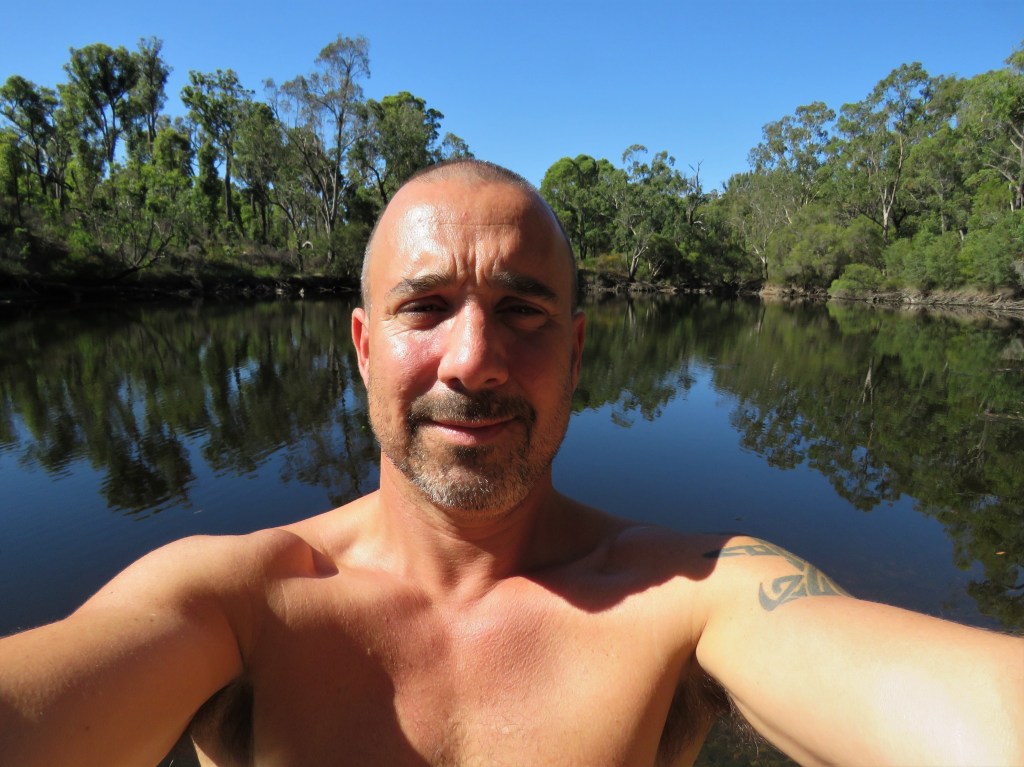
I made the drive into Manjimup for dinner after the swim then returned to Perup Nature’s Guesthouse via Corbalup Road. The late afternoon sun cast shadows from the giant Jarrah trees that was quite magical.
Jarrah Forest in Late Afternoon Sunlight.
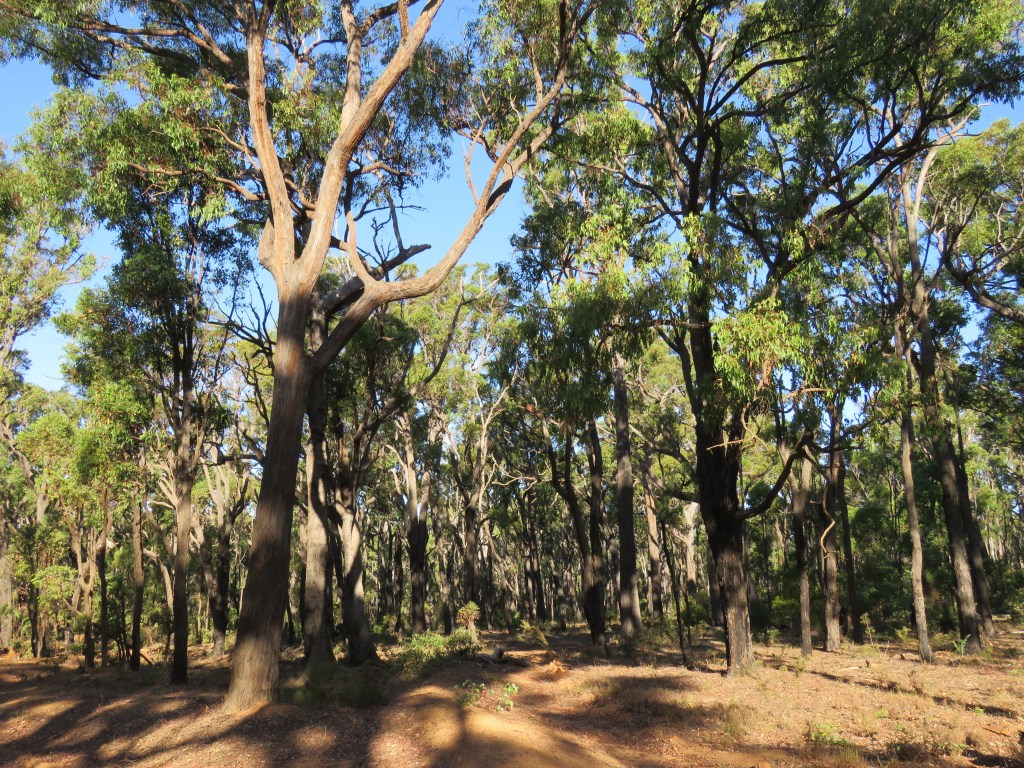
Once back at the cottage I prepared for the nights spotlight then sat on the balcony as dusk fell over the forest and watched Microbats hawk insects in the darkening skies.
Dusk Falls over Perup.
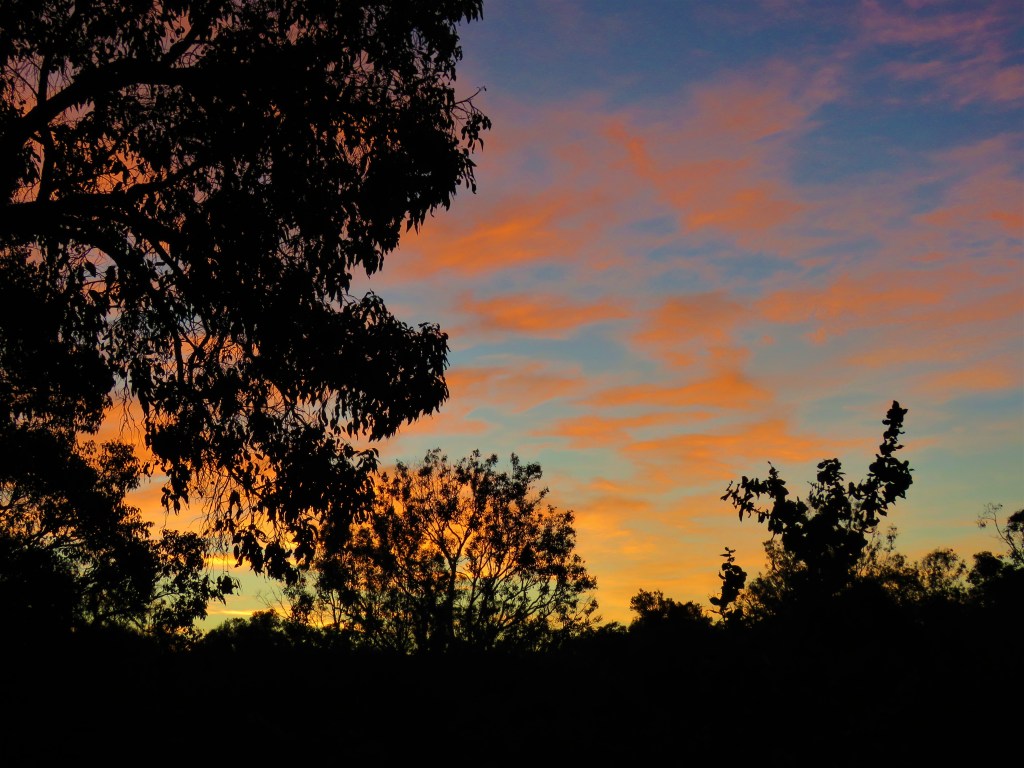
The final spotlight of the trip was not particularly rich in a variety of wildlife but I saw Brushtail Possums walking around the Perup Nature’s Guesthouse, and both Brushtail Possums and Western Grey Kangaroos driving along Boyup Brook – Cranbrook Rd. I was paying particular attention the tree trunks because I was keen to find a Brush-tailed Phascogale but it wasn’t to be.
Brushtail Possum.

On the final day, I wanted to return to Perth early in the day to set up for the working week, but not before a final drive along Pollard Road where I encountered a mob of Western Greys early morning.
Western Grey Kangaroo – Pollard Rd in Zamia Understory.

It was to be a mere six weeks before I returned to Perup, and I hoped that this future visit would bring me Phascogales and even some frogs if the Autumn rains had arrived!
Visit 3 – April 19th – 22nd, 2019. Phascogale!
On my previous two visits to Perup, I had encountered nearly all of the local marsupials, but there was one last species that had eluded me, the Brush-tailed Phascogale. This visit to Perup was to be the last in the series, as a result of some fabulous encounters with this species.
To avoid the Easter traffic Thursday afternoon I made the drive to Perup on the morning of Good Friday. The drive was freaky in places with the Autumn rains lashing down at times. The rain had mostly cleared to showers by the time of my arrival at Perup and a beautiful rainbow was low in the sky over the Southern Forests.
Rainbow over the Southern Forests.

It was great to be back in the Jarrah Forest, and I enjoyed driving the tracks until a fresh band of showers came through, when I retreated to Perup Nature’s Guesthouse. This visit I was staying at Doornart Cottage for the first time, and caretaker Shaun had kindly lit the fire for me, on what was indeed a cold day. After a chat, we agreed to meet up later when Shaun had kindly offered me a camera lesson.
In between showers the birdlife outside the cabin was looking lively with both Red-capped Robins and Yellow-breasted Robins hawking for insects in the brief snatches of sunshine.
Western Yellow Robin.
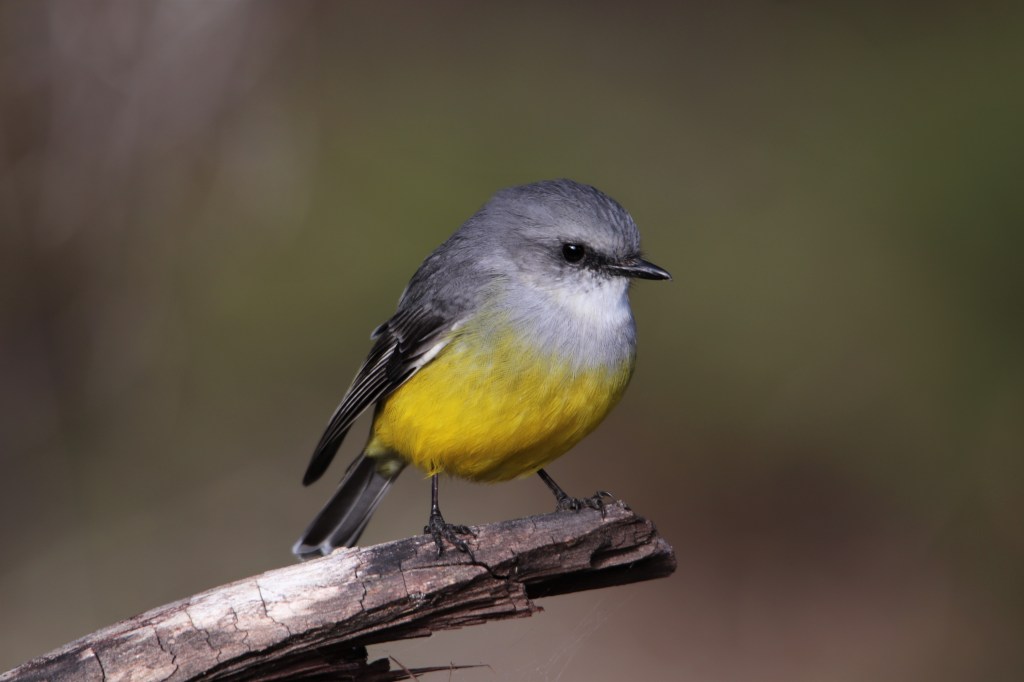
My camera lesson with Shaun was very useful indeed, and shooting with my camera in a different mode has made a great difference to my photography. Thanks Shaun.
I drove to Simcock Road late afternoon, to see if I could get views of the Tammar Wallabies at this location. On the way, I disturbed a magnificent Wedge-tailed Eagle off a road killed Kangaroo. The Tammar Wallabies were skittish as usual and prolonged views remained elusive.
After dark I walked the Bandicoot Scoot Trail, this was to remain close to my accommodation as heavy showers were still passing through. The haunting call of Moaning Frogs filled the night air, but unfortunately this species had already burrowed after the rains earlier in the week. I was very surprised not to encounter any species of frog on such a wet Autumn evening. I did however, see three Woylies on the trail.
I attempted a spotlight on Boyup-Brook – Cranbrook Road after dark, but conditions were just too cold to hold the spotlight out of the open the car window with no gloves on. The only animal I saw was a another Woylie bolt across the road before I decided to call it quits and return to the warm fire back at the cottage. I was in bed by 10pm to the sound of rain falling on the tin roof, magical!
Saturday morning I woke early and the first thing I did was to get the fire going. It was freezing! I decided that I would do the usual early morning walk to see if I could photograph the resident Tammar Wallabies. I was more successful than usual with a few animals freezing in the Melaleauca Thicket for good views.
Tammar Wallaby.

The previous afternoon Shaun had kindly indicated a spot where the Tammars congregate early morning, and I was able to use this information to make the cold weather work in my favour. The Wallabies were preoccupied warming themselves in the early morning sun, allowing close approach and photos. Thanks Shaun!
Tammar Wallaby Sunbathing after a Cold Night.

After a brief walk, I returned to the warm cottage to find a note in the door from the previous night, that I had missed. The note explained that Shaun the caretaker had received a visit from a Phascogale the previous night, and had called over so I would not miss out. Disappointed that I had not been at home, I consoled myself with the morning’s Tammar photos that had been a long time coming!
Later that morning, Shaun called over to regale me with his Phascogale encounter the previous night, as he was talking unbelievably a bloody Phascogale came bouncing down the road behind him! My face must have been a picture!
The Phascogale climbed a flowering yate tree and proceeded over the course of an hour to systematically visit each blossom in the tree to collect the nectar, much to the annoyance of the resident Honeyeaters!
I can only surmise that this behaviour was in response to the upcoming mating season from mid-may of this species, and this animal was busily building up reserves in anticipation. The overcast conditions also probably worked in my favour.
The Phascogale was very hard to follow as it moved around the tree quickly to collect nectar, but eventually it propped on a low branch to groom allowing some photos. The whole experience was so surreal.
Brush-tailed Phascogale.

Later in the day I made the drive to Bridgetown to pick up supplies, disturbing my second Wedgetail Eagle of the weekend, off the road and high up into a tree.
I waited until after dark to drive back to Perup, in the hope of encountering wildlife on the return journey. I was not disappointed with all of a Brushtail, Ringtail, Woylie and Western Grey Kangaroos seen on the return drive.
Back at the Perup Nature’s Guesthouse I joined Shaun on his balcony to watch the resident Possums. There was no visit from the Phascogale on this night, and wildlife was absent on our short spotlight so I returned to my cottage for another early night. This was the coldest night of the weekend with overnight temperatures dropping to a chilly 1C.
The following morning I walked the Woylie Walk and delighted to see that a few of the Swamp Banksias had started to flower, no doubt a welcome source of nectar for wildlife at this time of the year.
Swamp Banksia (littoralis) Flowering.

Birds were plentiful on the walk with all of Western Rosella, White-breasted Robin, Scarlet Robin, Grey Fantail, Golden Whistler and Fairy Wren seen on the walk.
White-breasted Robin.

Once the day had sufficiently warmed I drove the roads and tracks looking for Numbats, and while I was unsuccessful with Numbats, I did get great views of a Grey Fantail that was intent on hawking insects. In fact this bird was so preoccupied with food that I had to chase it off the road so that I could drive past without driving over it!
Grey Fantail.

Temperatures were warmer on this the last night of my trip, and I wanted to make the most of these favourable conditions, after the cold snap during the first two nights of the trip, so I planned an extended spotlight.
Immediately it was apparent that there were good numbers of mammals around with five Brushtail Possums seen on the short walk from Doornart to Kulbardi Cottage. This number rising to twenty by the time I had completed the Bandicoot Scoot Trail and a short exploration around the accommodation area.
Brushtail Possum.
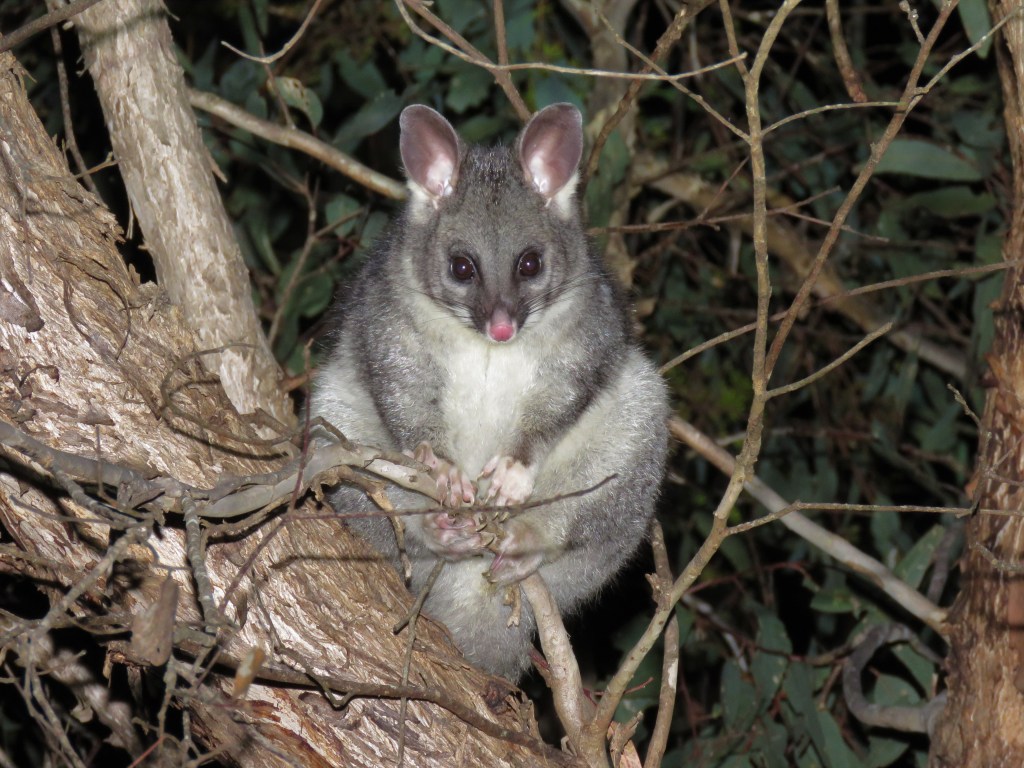
I also encountered a Tawny Frogmouth on this initial walk and disturbed two Woylies that bounded across my path at the accommodation area. I followed the Woylies and one of them allowed close approach because it was focused on feeding. My eye was on the animal as I photographed it and I assumed that it was eating fungi. This was not the case and I soon realised that the Woylie was enjoying fresh Emu poo!
Woylie Feeding on the Seeds in Emu Poo!

After my initial surprise had subsided, it of course made sense that a Woylie would feed on such a rich source of seeds. Woylies the ultimate recycler!
This was a great start to the night and during a drive along Boyup-Brook – Cranbrook Road I added all of Western Greys, Brushtails, Ringtails and a another Woylie to the nights tally.
Back at the Perup Nature’s Guesthouse, despite the late hour, I thought it would be worthwhile to walk the Bandicoot Scoot Trail one more time. I’m glad I did. Not only did I see another ten Brushtail Possums and another two Woylies but I encountered my second Brush-tailed Phascogale of the weekend in a small Jarrah shrub.
Brush-tailed Phascogale.
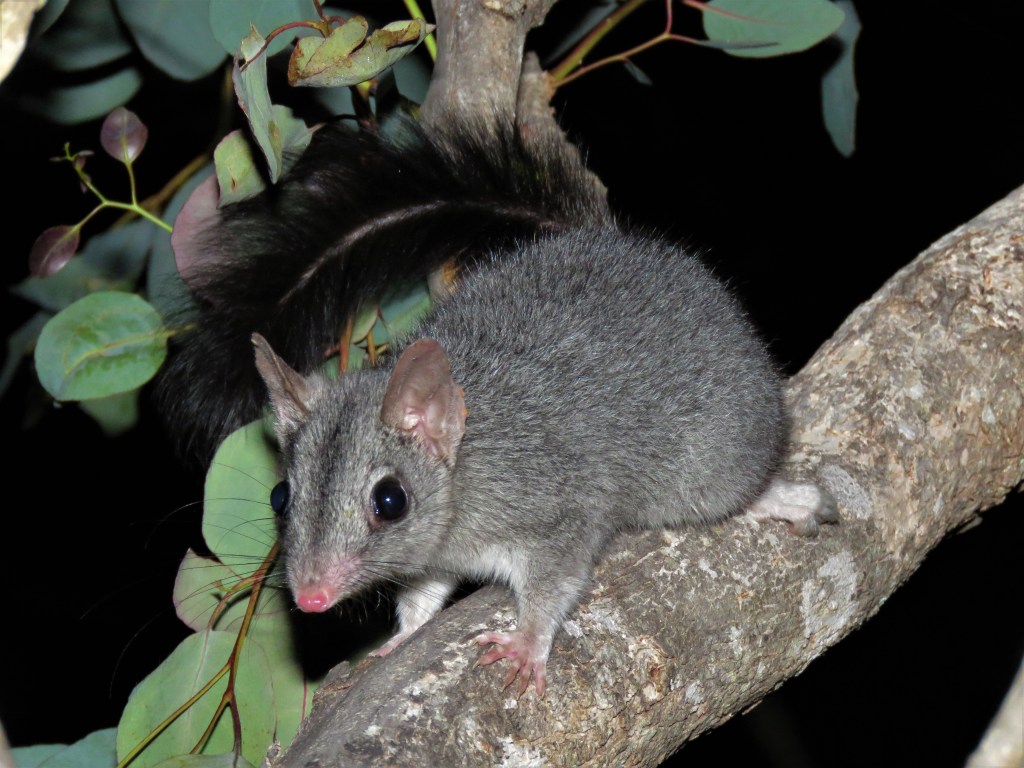
Satisfied with a great evening and very tired, I went to bed after making sure the fire was well stocked for the night.
The following morning I packed up for the return journey then went for a last walk around the Perup Nature’s Guesthouse. The Tammars were flighty and birds evasive so I took my cue to leave.
I drove slowly along Boyup-Brook – Cranbrook Road hoping to see a last Numbat, but all was quiet. On a whim I decided to make the short drive along Pollard Road. Here 30m in front of the car, a Numbat dashed across the road into a patch of Jarrah Forest with a huge number of fallen logs, immediately I lost the Numbat.
I had nothing to lose, so I positioned myself on one of the logs and scanned the surrounding forest for any sign of the Numbat. Within 10 minutes movement caught my eye from a nearby jumble of logs, the missing Numbat!
The Numbat retreated into the log as I approached, but soon a set of paws and stripey face were peering out of the hole.
Numbat Hide and Seek.
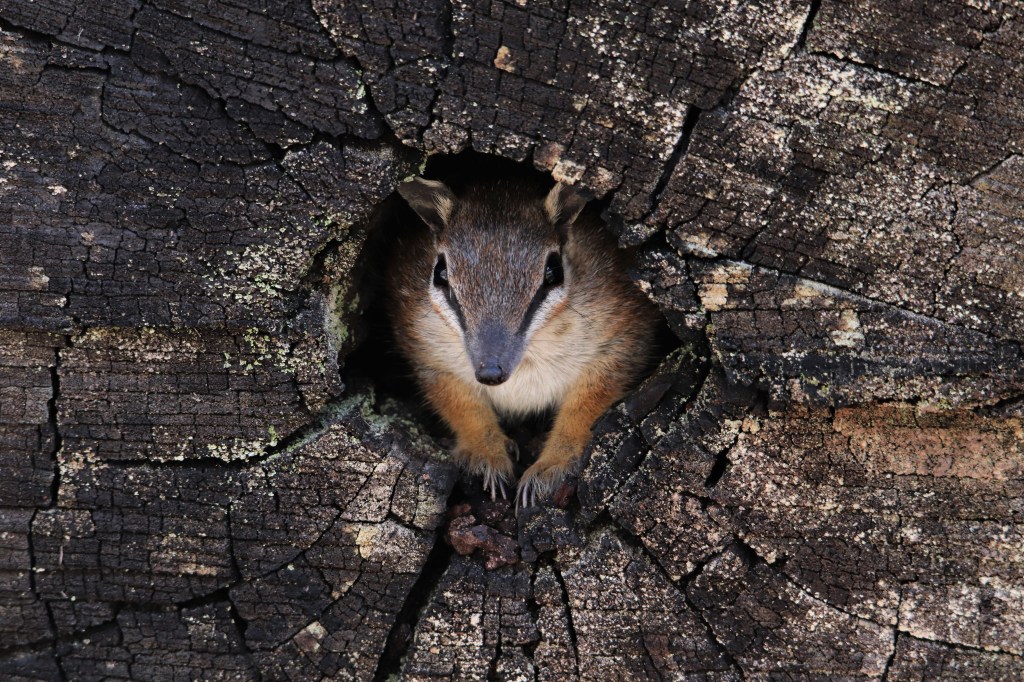
The Numbat remained very cautious, jumping out and then retreating back into the log a number of times. I decided to give it more space, and when I did it exited the log properly, all the time remaining cautious.
Cautious Numbat.

Finally it summed up the courage to make its way off into the surrounding bush, leaving one very happy photographer in its wake!
As I returned to Perth, I thought about all the wonderful wildlife encounters I had experienced during my last three visits to Perup. As usual, it had lived up to my expectations, and remains one of my favourite places to view wildlife in Australia.
Initially I had planned to visit Perup six times over the course of a year, but with everything I could possibly wish to see in three visits, I have decided instead to search for three of West Australia’s mammals that have so far remained out of the reach of my lens…..
#QuollingAround
Now on my Bucket List.😎😎
LikeLike
Dear Jimmy,
Such brilliant photos of these gorgeous creatures (numbats) I just love the one where it is in the center of the hollow log. It shows how vital the Forest floor is to their survival. It needs the old fallen and hollow logs, so any disturbance by clearing or tidying this would take away their habitat and » hidy holes »! Your photos are sharp and capture the daintiness and perfection of these animals. I want to see more…!!
We will, for sure, be returning ourselves, to explore again this unique region of WA. Many thanks for your expert eyes, knowledge and willingness to share it all with others.
Kind regards,
Izzy & Daniel.
LikeLike
Thanks Izzy and Daniel, I look forward to seeing you in WA in the future! Jimmy
LikeLike